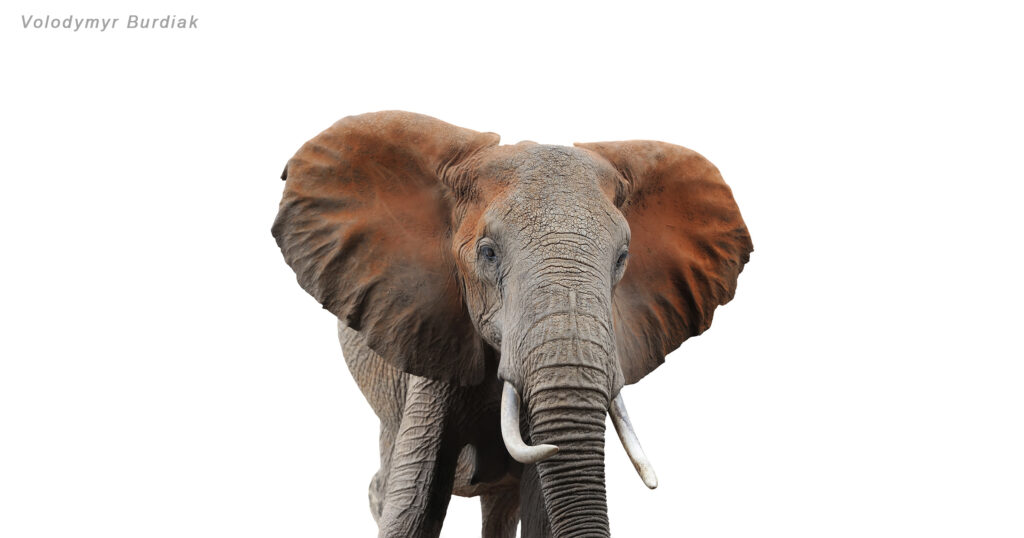
PRESENTS
African Bush Elephants
Written by Katelin Kukk of Harleysville, PA
Photographs by Wildlife Photographer Volodymyr Burdiak of Ternopil, Ukraine
Children often learn about elephants early in their lives because of their unique and captivating nature. However, few people are aware that the African bush elephant (Loxodonta africana) holds the title of the world’s largest land animal. These beasts can grow up to 13 feet tall and weigh up to seven tons, having the ability to crush a human with a single leg.
They live throughout parts of Africa, gravitating towards the savanna, floodplains, and lowland forests. African and Asian elephants are the only two living Proboscidean species (animals with a trunk), out of the total 352 Proboscidean species, that have survived since their first evolution millions of years ago.
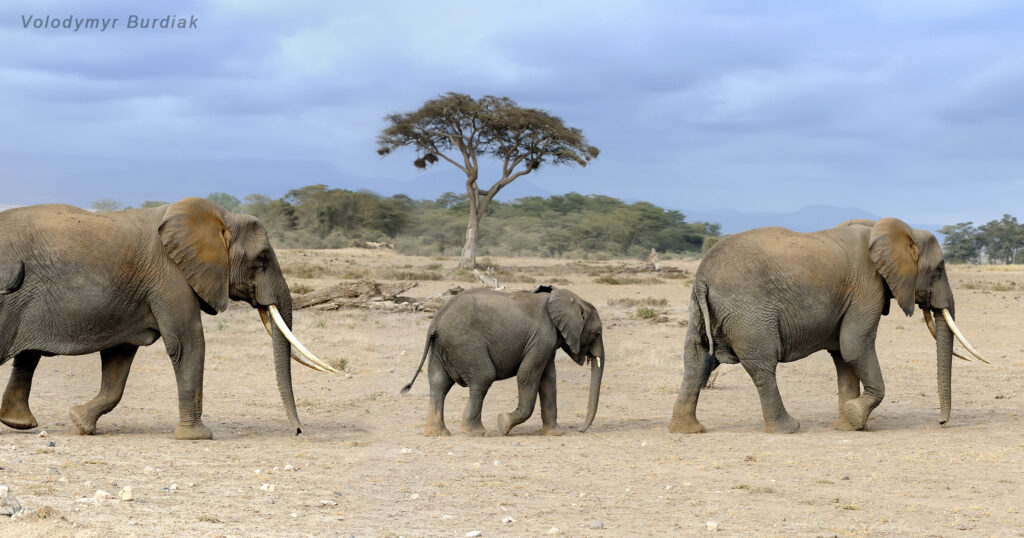
Physical Description
Being an ancient survivor, the African bush elephant possesses numerous physical characteristics that have helped to sustain them for millions of years. They are quite distinguishable in the wild due to their massive stature and two elongated ivory tusks situated on either side of their mouth. The elephant’s tusks are used for a variety of purposes which include, but are not limited to, digging, sexual displays, marking their territory, and defense. African bush elephants are also equipped with giant ears that not only allow them to hear, but conveniently help them dissipate the sweltering heat.
Due to their substantial size, these modified ears hold large blood vessels that cool the blood before it recirculates back into the body, enabling the elephants to thermoregulate. Additionally, their bodies employ sweat glands in their feet which act as another method of temperature regulation.
African bush elephants also feature a distinctivly long trunk, which is a fusion of the nose and upper lip. This trunk is a muscular appendage measuring approximately 6 feet in length which serves various functions such as breathing, spraying, and picking up food or objects.

Behaviors
One distinct behavior of these amazing creatures is the formation of herds among the females and calves (baby elephants) led by the matriarch. The title of matriarch is held by the group’s most dominant, respected female. In contrast, male elephants (also known as bulls) are solitary, leaving the herd when they are in their teens.
The departure of these adolescent males is mainly driven by their rising levels of testosterone which tends to make them more aggressive, thereby threatening the stability of the herd.
African bush elephants also have a great propensity to travel far distances in search of food and water, walking an average of 20 miles in a single day. Depending on their body weight, these herbivores can consume a whopping 250 pounds of vegetation and drink up to 35 gallons of water each day!
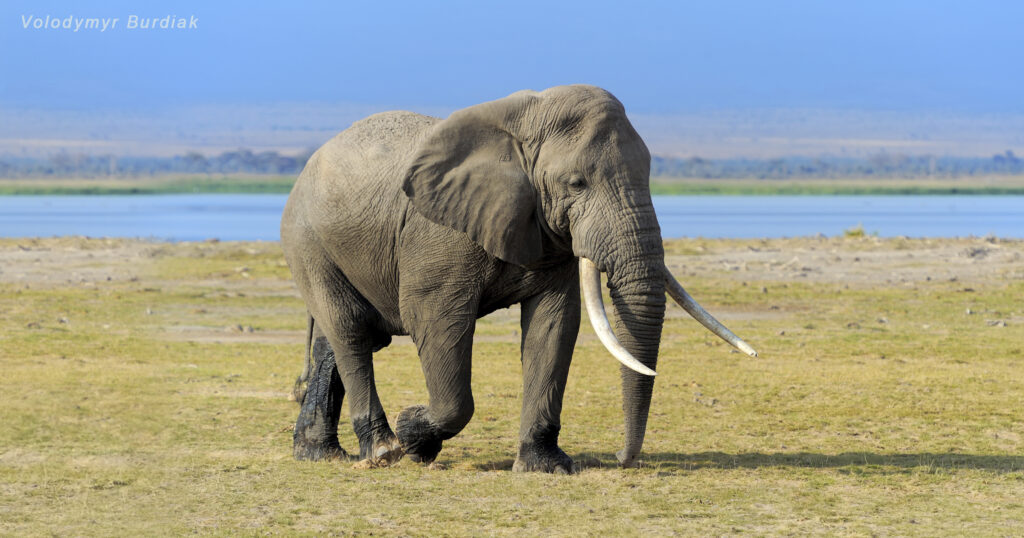
Status
Although millions of bush elephants roamed the African continent in the early 1900s, their population has seen a significant decline. Consequently, in 2021 these incredible creatures were listed as endangered. As a result of human destruction and a slow reproductive cycle, their population continues to progressively decrease. The ivory composition of their tusks makes them a rare and highly valued item to possess, resulting in heightened desperation from collectors and poachers who harvest and sell elephant tusks or keep them for personal use. This horrific process often causes these beautiful elephants to perish.
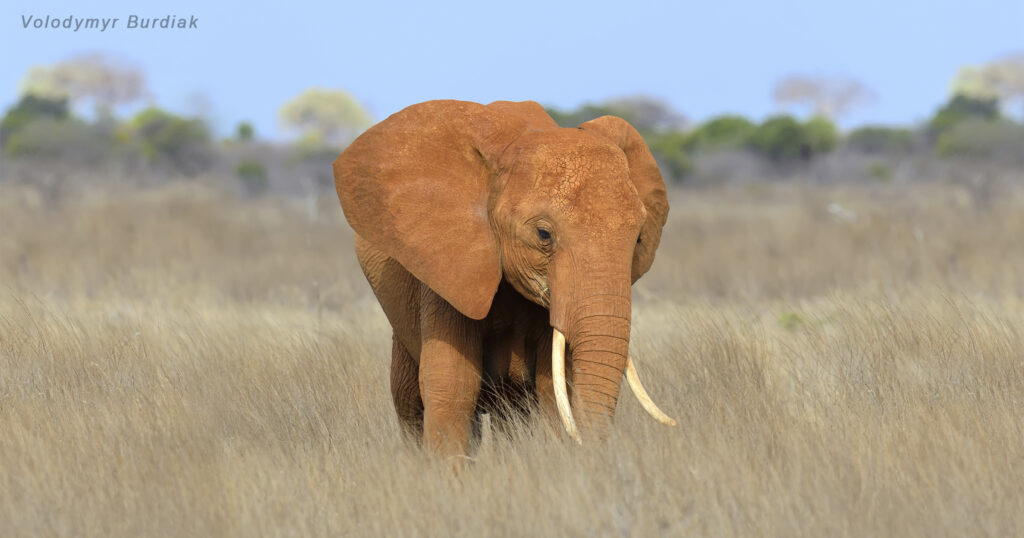
Importance
These majestic giants serve a crucial role to the habitat where they reside. For as long as they have roamed the earth African bush elephants have maintained the savanna and woodlands by reducing tree densities with their enormous appetites. This foraging prevents their lush open habitat from being overgrown with vegetation. During the dry season, African bush elephants dig holes with their tusks to find water. Because of the rich ecosystem of South Africa, spring water bubbles up after the disturbance by elephants providing essential resources for many other creatures.
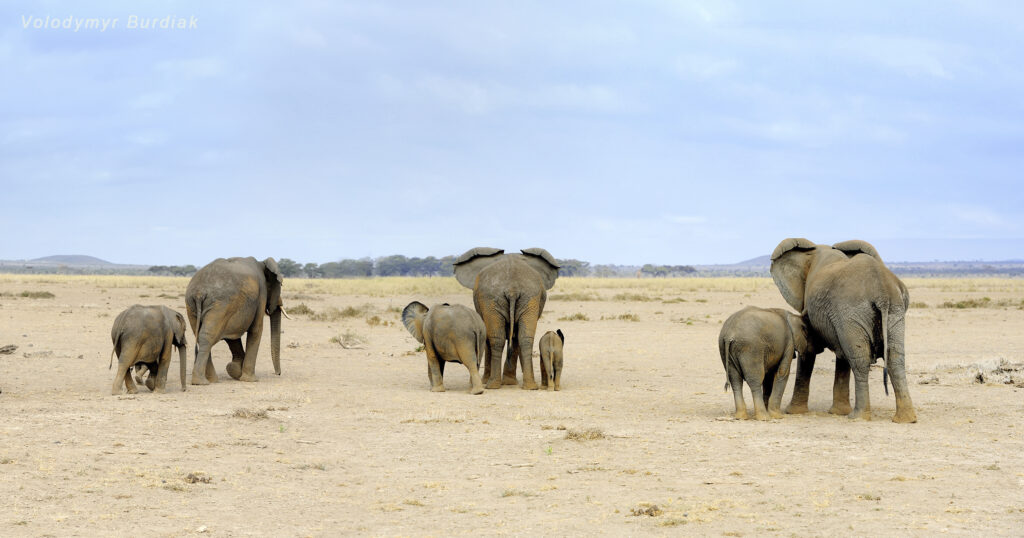
Conclusion
In conclusion, should the African bush elephant become extinct, other animals and plants would be unable to survive. Therefore, it is imperative to protect these amazing mammals not only to save them, but to preserve the other wonders around them.
Written by Katelin Kukk of Harleysville, PA
Photographs by Wildlife Photographer Volodymyr Burdiak of Ternopil, Ukraine
– – –

Spectacular creatures roamed the earth in the time long before the history of man. Species alive so far in the past, the only traces we find today are bits of rock and stone. Ages faded to dust in the wind. Yet there are those who remain. We call them Primeval Survivors. Do these remnants of the past hold the secrets of the ages?


